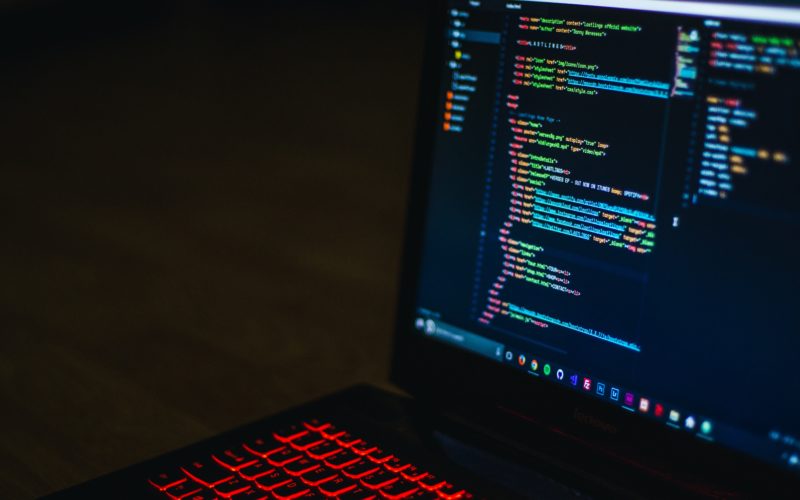On May 8, 2022, Kendrick Lamar released his song titled, “The Heart Part 5” and accompanied the drop with a music video. In the video, Kendrick stands in front of a red wall, rapping and looking at a camera while his face morphs into O.J. Simpson, Kanye West, Jussie Smollet, Will Smith, Kobe Bryant, and Nipsey Hussle.1[1]Kendrick Lamar, The Heart Part 5, YOUTUBE (May 8, 2022). https://www.youtube.com/watch?v=uAPUkgeiFVY. The video garnered media buzz, with publications like Variety and Pitchfork commenting on its use of technology to portray cancel culture.2[2]Jem Aswad, Kendrick Lamar Drops New Song, ‘The Heart Part 5’ — Video Features the Faces of Kanye West, Will Smith, O.J. Simpson, Others Photoshopped Over His, VARIETY (May 8, 2022), https://variety.com/2022/music/news/kendrick-lamar-new-song-the-heart-part-5-1235261634/; Marc Hogan, How Kendrick Lamar’s “The Heart Part 5” Video Subverts Deepfake Technology, PITCHFORK (May 9, 2022), https://pitchfork.com/thepitch/kendrick-lamar-the-heart-part-5-video-deepfake-technology/. The video also introduced a large audience to the world of deepfake technology. Considering the growth in popularity and usage of deepfakes, many celebrities and lawyers alike have wondered what a modern day deepfake looks like and what legal issues may arise.
An Abridged History of an AI Marvel
Deepfakes are a component of artificial intelligence where software “take(s) the likeness of one person . . . in video or other digital media” and uses it as a form of communication.3[3]Dave Johnson, What is a deepfake? Everything you need to know about the AI-powered fake media, BUSINESS INSIDER (Aug 10, 2022), https://www.businessinsider.com/guides/tech/what-is-deepfake?utm_source=copy-link&utm_medium=referral&utm_content=topbar. In an article for Business Insider, Benjamin Goggin states “A good deepfake . . . has been specifically generated for its context, with seamless mouth and head movements and appropriate coloration.”4[4]Benjamin Goggin, From porn to ‘Game of Thrones’: How deepfakes and realistic-looking fake videos hit it big. BUSINESS INSIDER (Jun 23, 2019), https://www.businessinsider.com/deepfakes-explained-the-rise-of-fake-realistic-videos-online-2019-6?utm_source=copy-link&utm_medium=referral&utm_content=topbar. Today, one can create a deepfake using free apps such as Reface, Lensa AI, and DeepFaceLab. As a response, websites such Reddit and Twitter have taken steps towards regulating deepfakes that were not created with the subject’s consent.5[5]Twitter Synthetic and Manipulated Media Policy. In 2022, the Congressional Research Service released a report about the threat deepfakes pose to national security, specifically pointing out that they could be a form of blackmail and “inflammatory content.”6[6]Kelley M. Sayler & Laurie A. Harris, Congressional Research Service, Deep Fakes and National Security (2022).
Many Legal Questions, Not Many Legal Answers
Three states have forms of deepfake legislation in place: Texas, Virginia, and California. Texas’s Election Code § 255.004 states that a person commits an offense if they create a deepfake video and distributes it within 30 days of an election.7[7]§ 255.004 (d) (2021). Virginia modified its revenge porn statute to include deepfake porn in 2019.8[8]Va. Code § 18.2-386.2 (2023). California has two assembly bills – one against malicious usage of deepfakes within 60 days of an election9[9]Assem. Bill 730, 2019, Reg. Sess (Cal. 2019) . and one against nonconsensual deepfakes, which permits a plaintiff to recover damages.10[10]Assem. Bill 602, 2019, Reg. Sess. (Cal. 2019). Other states, such as New York, have unsuccessfully attempted to implement deepfake regulations. In the federal system, there has been no legislation on deepfake technology and very little case law.
Further, most deepfake subjects are public figures, which complicates tort claims. For defamation, public figures must show that the person who defamed them acted with actual malice and reckless disregard for the truth while publishing a false statement to collect damages.11[11]New York Times Co. v. Sullivan, 376 U.S. 254, 279 (U.S. 1964). They must also demonstrate that the statements were “untrue in fact and derogatory to the character of the plaintiff.”12[12]Id. at 281. The burden is on the plaintiff to demonstrate this, and it is an extremely high bar to meet.13[13]Id.
If the subjects of “The Heart Part 5” were to sue Kendrick Lamar for the use of their faces, it would be very difficult because the video itself is non-derogatory. The goal of the video is not to defame, but rather to get a point across about cancel culture. No false statements were made in the video that could even create a claim.
On the other hand, in February 2023, podcast creator and frequently controversial figure Joe Rogan went viral for “advertising” a libido booster pill called Alpha Grind.14[14]Matt Binder, TikTok removes viral video ad of suspected Joe Rogan AI deepfake, MASHABLE (Feb 15, 2023), https://mashable.com/article/joe-rogan-tiktok-deepfake-ad. In the podcast clip, Rogan is seemingly discussing Alpha Grind with a guest, saying that it is making a huge difference for men.15[15]Id. However, it was discovered that the video was a deepfake to promote the product.16[16]Id. Rogan had never spoken about the Alpha Grind, and the clip was removed from both TikTok and Twitter. This could have supplied grounds for a defamation claim, as the statements were both untrue and derogatory towards the plaintiff’s character because it looked like Joe Rogan was promoting a fake pill that did not work. The deepfake could have impacted his reputation and cost him credibility. As a podcast host that promotes its uncensored, “real” content, he could suffer financial loss in the form of lost viewers or advertisers.
Fair Use – A Deepfake Defense?
A fair use defense may be available to deepfake creators. Fair use is a legal doctrine that balances first amendment free speech interests against the interest in promoting creativity and preventing unjust enrichment of unlicensed users. The doctrine is most frequently invoked in copyright infringement claims, permitting use of a copyrighted work without the owner’s permission for purposes such as commentary or criticism.17[17]What is Fair Use?, COPYRIGHT ALLIANCE (2022), https://copyrightalliance.org/faqs/what-is-fair-use/. Four factors are weighed in determining fair use: purpose and character of the use, nature of the work, amount of work used, and effect of market value for original owner due to the use.18[18]Id. However, fair use may fail “where the public interest in avoiding consumer confusion outweighs the public interest in free expression.”19[19]Rogers v. Grimaldi, 875 F.2d 994, 999 (2d Cir. 1989). A version of the fair use defense is also available in cases involving the right of publicity, as long as the use is not for commercial purposes. Thus, the defense might protect Kendrick Lamar’s deepfake video, but not the Alpha Grind deepfake advertisement.
In another example, Anthony Bourdain’s documentary Roadrunner generated controversy when the director used deepfake technology to complete the project.20[20]AI narration of chef Anthony Bourdain’s voice sparks row. BBC (July 16, 2021), https://www.bbc.com/news/technology-57842514. In the film, “Bourdain” reads aloud his own words that he has sent in emails.21[21]Id. The director insisted that he received clearance from the estate to use deepfakes, but Bourdain’s ex-wife tweeted that this was not true.22[22]Id. This could fail fair use for a several reasons: the audiences were deceived into thinking it was Bourdain, the emails that deepfake Bourdain read might have been private, and the documentary team accessed the documents in bad faith.
To conclude, deepfake technology and media manipulation is a developing issue. As time passes and artificial intelligence becomes more accessible, deepfakes will become a policy concern that additional states and the federal government will address. Yet, the question remains as to how these jurisdictions will choose to regulate.
Written By: Selma Jay
Selma is a 2025 J.D. Candidate at Brooklyn Law School
1 Kendrick Lamar, The Heart Part 5, YouTube (May 8, 2022). https://www.youtube.com/watch?v=uAPUkgeiFVY.
2 Jem Aswad, Kendrick Lamar Drops New Song, ‘The Heart Part 5’ — Video Features the Faces of Kanye West, Will Smith, O.J. Simpson, Others Photoshopped Over His, Variety (May 8, 2022), https://variety.com/2022/music/news/kendrick-lamar-new-song-the-heart-part-5-1235261634/; Marc Hogan, How Kendrick Lamar’s “The Heart Part 5” Video Subverts Deepfake Technology, Pitchfork (May 9, 2022), https://pitchfork.com/thepitch/kendrick-lamar-the-heart-part-5-video-deepfake-technology/.
3 Dave Johnson, What is a deepfake? Everything you need to know about the AI-powered fake media, Business Insider (Aug 10, 2022), https://www.businessinsider.com/guides/tech/what-is-deepfake?utm_source=copy-link&utm_medium=referral&utm_content=topbar.
4 Benjamin Goggin, From porn to ‘Game of Thrones’: How deepfakes and realistic-looking fake videos hit it big. Business Insider (Jun 23, 2019), https://www.businessinsider.com/deepfakes-explained-the-rise-of-fake-realistic-videos-online-2019-6?utm_source=copy-link&utm_medium=referral&utm_content=topbar.
5 Twitter Synthetic and Manipulated Media Policy
6 Kelley M. Sayler & Laurie A. Harris, Congressional Research Service, Deep Fakes and National Security (2022).
7 § 255.004 (d) (2021).
8 Va. Code § 18.2-386.2 (2023).
9 Assem. Bill 730, 2019, Reg. Sess (Cal. 2019).
10 Assem. Bill 602, 2019, Reg. Sess. (Cal. 2019).
11 New York Times Co. v. Sullivan, 376 U.S. 254, 279 (U.S. 1964).
12 Id. at 281.
13 Id.
14 Matt Binder, TikTok removes viral video ad of suspected Joe Rogan AI deepfake, Mashable (Feb 15, 2023), https://mashable.com/article/joe-rogan-tiktok-deepfake-ad.
15 Id.
16 Id.
17 What is Fair Use?, Copyright Alliance (2022), https://copyrightalliance.org/faqs/what-is-fair-use/.
18 Id.
19 Rogers v. Grimaldi, 875 F.2d 994, 999 (2d Cir. 1989).
20 AI narration of chef Anthony Bourdain’s voice sparks row. BBC (July 16, 2021), https://www.bbc.com/news/technology-57842514.
21 Id.
22 Id.




